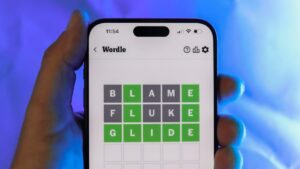
For puzzle enthusiasts, the New York Times Connections puzzle offers a daily mental workout that has captured the interest of many. The puzzle for July 9, 2025, #759, features a classic purple category that challenges players to identify a common thread among seemingly unrelated words. This article provides today’s hints and answers, along with tips to enhance your puzzle-solving skills.
The New York Times has introduced a Connections Bot, similar to the one used for Wordle, allowing players to receive a numeric score and analyze their performance. Registered users can track their progress, including the number of puzzles completed, win rates, perfect scores, and win streaks.
Today’s Connections Hints
Here are the hints for today’s Connections puzzle, categorized from the easiest yellow group to the challenging purple group:
- Yellow group hint: Where students hang out.
- Green group hint: Chewing the scenery.
- Blue group hint: Going to catch you!
- Purple group hint: Think frat and sorority names.
Solutions for Today’s Connections Puzzle
Yellow Group: Parts of a College Campus
The theme for the yellow group is parts of a college campus. The four answers are cafeteria, dorm, library, and quad.
Green Group: Exaggerated Performances
In the green group, the theme is exaggerated, as a performance. The answers are camp, dramatic, hammy, and overdone.
Blue Group: Closing In
The blue group’s theme is close in on. The answers are corner, surround, trap, and tree.
Purple Group: Greek Letter Beginnings
The purple group focuses on the starts of Greek letters. The answers are bet, delt, lamb, and the.
Strategies for Mastering NYT Connections
Solving the Connections puzzle requires not just a sharp mind but also strategic thinking. Here are some expert tips to improve your performance:
- Verbalize Clues: Say the clue words out loud, pausing before and after each. This helps in recognizing words that fit together in common phrases.
- Avoid Obvious Groupings: The editors often challenge players with misleading groupings. For instance, a past puzzle included the words SPONGE, BOB, SQUARE, and PANTS, none of which belonged to the same category.
- Analyze Compound Words: Break down compound words to find connections. For example, the word “Rushmore” was once used in a puzzle where each word started with the name of a rock band.
The Growing Popularity of Puzzle Games
The rise of digital puzzle games like NYT Connections and Wordle reflects a broader trend towards brain-training games that combine entertainment with cognitive benefits. According to a study published in the Journal of Cognitive Enhancement, engaging in regular puzzle-solving activities can improve memory, problem-solving skills, and even mood.
“Puzzles are a fantastic way to keep the mind sharp and engaged,” says Dr. Emily Carter, a cognitive psychologist at the University of California. “They offer a unique blend of challenge and reward that can be both stimulating and relaxing.”
As the popularity of these games continues to grow, so does the community of dedicated players who share strategies and celebrate their achievements online. The New York Times’ introduction of the Connections Bot is a testament to this thriving community, offering players new ways to engage with their favorite puzzles.
As the puzzle landscape evolves, players can look forward to more innovative challenges that test their wit and creativity. Meanwhile, those new to the game can use the tips and solutions provided here to enhance their puzzle-solving experience.





